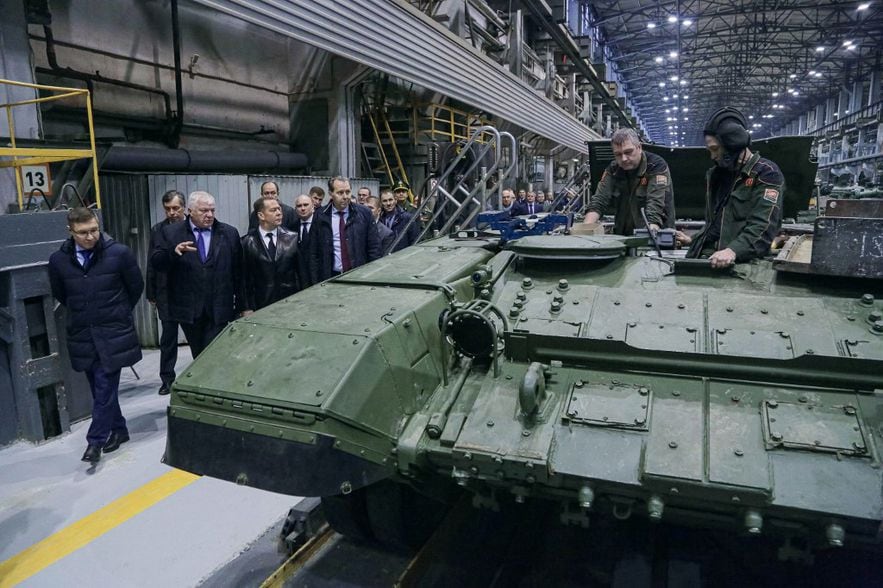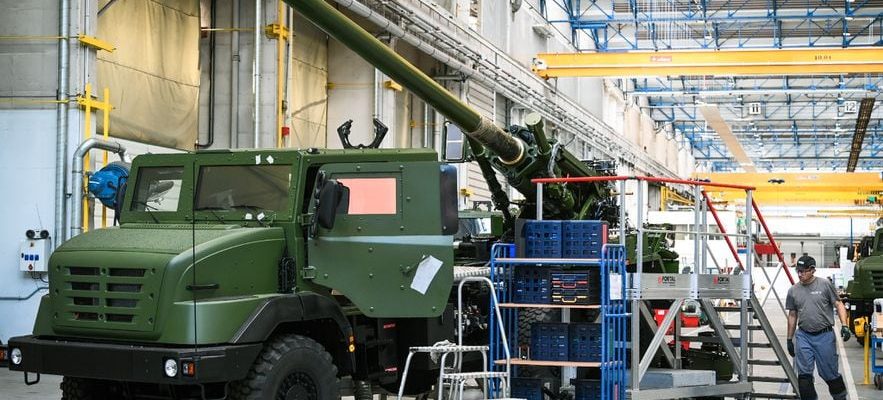“Ukraine must receive all the military equipment it needs to defend its territory,” insisted the President of the European Commission, Ursula von der Leyen, at the beginning of January 2023, in a joint declaration with the head of NATO who was to kick off the new year. Almost a year later, questions are increasing about the capacity of the 27 to support kyiv over the long term. Despite a historic agreement on the opening of negotiations for Ukraine’s accession to the EU on December 14, the Europeans have not managed – for the moment – to agree on new aid of 50 billion euros. At issue: the veto of Hungarian nationalist leader Viktor Orban, Putin’s relay in Europe.
Equally worrying, the Europeans “will not achieve”, despite their promise, their objective of delivering one million shells to kyiv between March 2023 and March 2024, Berlin confirmed in mid-November. Until then, only 30% of the precious ammunition – essential for Ukrainian artillery – would have been delivered. At a time when Moscow is redoubling its efforts to nibble away at its neighbor’s territories after the failure of its counter-offensive, these delays are not without consequences on the front and the Ukrainians’ ability to cope.
Europe “continues to underinvest” in its defense
They can be explained above all by an inadequacy of the European industrial apparatus. “After decades of underinvestment, the production capacities of the European defense industry are far below the objectives that have been set, confirms Marc Chassillan, military engineer and specialist defense consultant. Over the last three decades, factories have adapted their production capacities to the needs of European armies, which have essentially become peacetime armies.” At the end of the Cold War, the forces of the Old Continent saw their military budgets shrink and their missions focus more on counter-insurgency operations (in Afghanistan, for example), which consume little in terms of equipment or ammunition.
In 2022, the French group Nexter was capable of producing 60,000 shells per year, or a little more than a week of combat at the rate at which they are consumed by the Ukrainian forces. Faced with these increased needs, European manufacturers are now trying to keep up. Nexter plans to increase its production by 50% in 2024 and to double it in 2025 (compared to 2022). In Germany, the Rheinmetall group announced at the beginning of December its intention to reach an annual capacity of 700,000 units next year, compared to 450,000 last summer. “On the scale of the European continent, we would have to multiply production by four or five,” says Marc Chassillan. “This necessarily involves building new factories, or expanding those we already have.”
A Caesar cannon on the Nexter site, July 4, 2023 in Roanne
© / afp.com/OLIVIER CHASSIGNOLE
The problem is the significant cost of such an increase in power. “It’s a huge investment and we can’t do it alone,” said Micael Johansson, CEO of the Swedish aeronautical group Saab, on November 30 in Brussels. Despite the war in Ukraine, Europe “continues to underinvest” in its defense, “which prevents the industrial ecosystem from increasing its production to meet growing demand”, also warned in a Tribunepublished a month earlier, the leadership of the Aerospace and Defense Industries Association of Europe, which represents sector leaders such as Rheinmetall, KNDS and Naval Group.
Result, according to recent study from the Kiel Institute, aid pledges to Ukraine reached their lowest level between August and October 2023, falling 87% compared to the same period a year earlier. “The bottom of the barrel is now visible,” summed up Admiral Rob Bauer, NATO’s highest military officer, in the fall, calling on the Europeans to “step up the pace”.
“The Russians have entered into a logic of war economy”
“There is no political consensus today in Europe for a victory for Ukraine: the only consensus is to prevent it from losing,” says François Heisbourg, special advisor to the Foundation for Strategic Research. we wanted to win, we would really have to switch to a war economy.” An objective nevertheless displayed by Emmanuel Macron, from June 2022, during his speech at the Eurosatory arms fair in Villepinte…
Paradoxically, while they need it to develop their capabilities, European manufacturers are, moreover, far from being the first beneficiaries of the increase in defense budgets on the Old Continent. Since the start of the war in Ukraine, 78% of orders have been placed with non-European players, including 63% in the United States alone, according to a study published in September by the Institute of International and Strategic Relations.
Far from European procrastination, Russian factories are running at full capacity to cover the needs of the army. With $109 billion planned for 2024, or 6% of Russian GDP, military spending should represent nearly a third of the state budget. “The Russians have entered into a logic of war economy, summarizes Camille Grand, former deputy secretary general of NATO, now a researcher at the European Council on Foreign Relations. And the efforts they are mobilizing to increase their production capacities are clearly long-term.”

Former Russian leader Dmitry Medvedev, an ally of President Putin and now vice chairman of the country’s security council, visits Uralvagonzavod, Russia’s main tank factory in the Urals, in Nizhny Tagil, October 24, 2022
© / AFP
In Kazan, Irkutsk and Yekaterinburg, several Russian manufacturers of military aircraft, combat helicopters, drones and guided munitions have expanded their installations, according to satellite images analyzed at the end of October by the Ukrainian media Skhemy/RFE/RL. At the same time, North Korea has delivered more than a million shells to Moscow in recent months, according to South Korean intelligence. Despite his numerous losses – 315,000 men according to Washington – the leader of the Kremlin gives no sign of wanting to pause his war effort. “If Putin wins in Ukraine, there is a real risk that his aggression will not stop there, NATO Secretary General Jens Stoltenberg warned on December 14 in Brussels. Our support is not the charity, it’s an investment in our security.”
Five to seven years to prepare
“The idea that the strategic challenge posed by Russia will disappear after this conflict is completely false,” says Camille Grand. If we do not want to sleepwalk in today’s world, it seems desirable to do so today. this investment effort in a European defense tool, to be able to defend ourselves if necessary.” Because at the same time, fears are also growing around the sustainability of American support, in the context of the war between Israel and Hamas in the Middle East, and with the approach of an American presidential election, in 2024, which could see the return of Donald Trump at the White House. The American Congress is already stumbling over the vote on an additional envelope of 60 billion dollars for Ukraine, due to the reluctance of the Republican camp.
The second half of the decade could hold serious security challenges for Europeans. “In the event of a military confrontation with China in the mid-to-late 2020s, Russia will have a strong incentive to seize a unique opportunity to break up NATO, at a time when the United States cannot strengthen Europe effectively, points out Justin Bronk, researcher at the Royal United Services Institute, in a recent note. By 2026-2028, Russian industry will have produced at full capacity for years, which will allow it to reconstitute even more seasoned forces.” Especially since, unlike its land army, which is largely hurt by the war in Ukraine, the Russian air forces have so far been little damaged.
In a study published at the beginning of November, the German Council on Foreign Relations estimated between “six and ten years” the interval that Russia would need to reconstitute its armed forces, in the event of a cessation or pause in the fighting in Ukraine. “Within this deadline, Germany and NATO must enable their armed forces to be able to deter Russia and, if necessary, to fight it. Only on this condition will they be able to measure to reduce the risk of a new war in Europe”, their authors detail. During a summit of the Visegrad group countries in Prague on November 22, Czech President Petr Pavel estimated the same deadline at five to seven years. More than ever for Europeans, time is running out.
.
